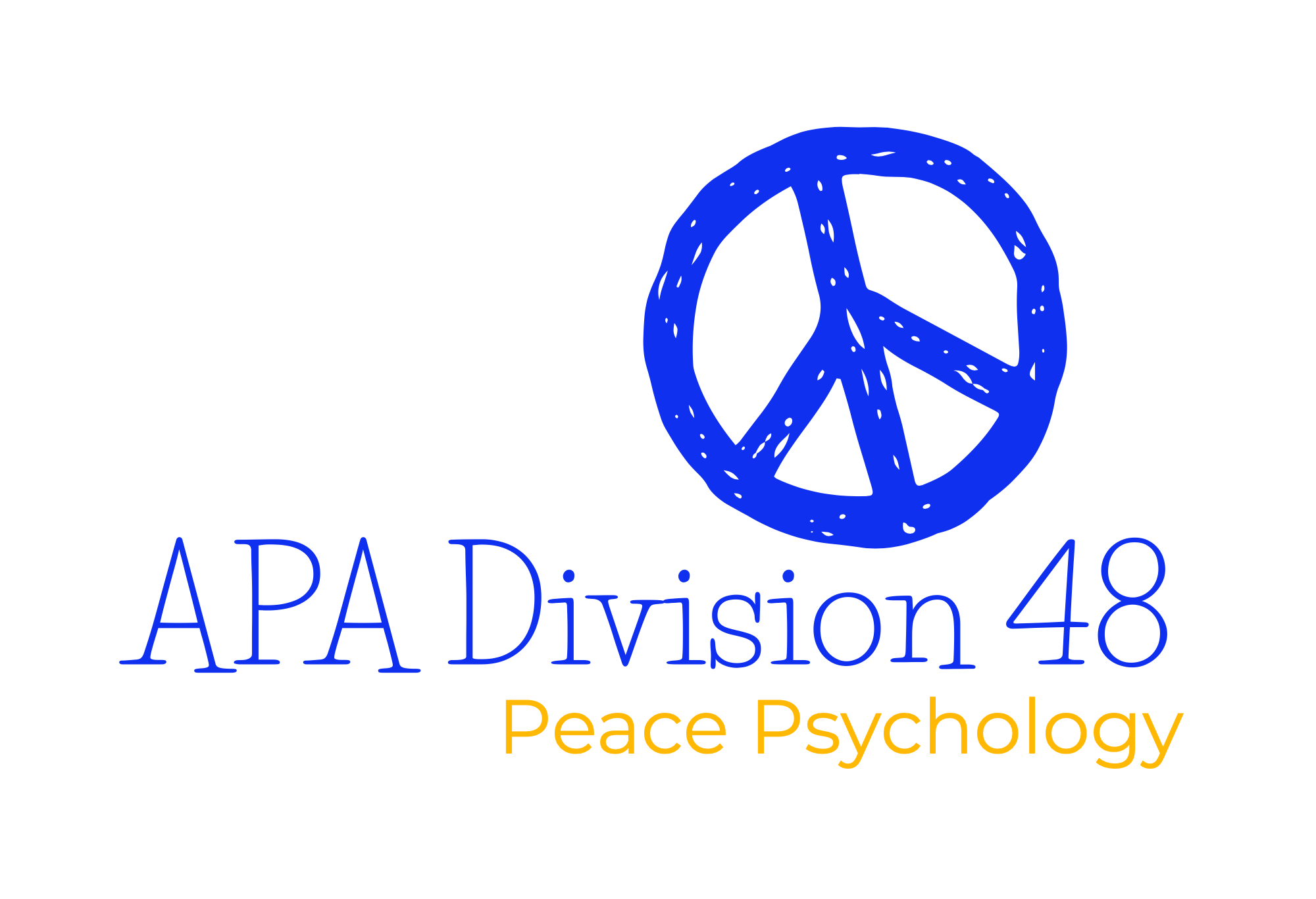Teach Peace in Every Course -- Linden Nelson
This is the second of my blogs posts with suggestions for teaching peace. First, in this post I want to briefly present some ideas about how you could “teach peace” in all of your courses. While these ideas are focused on the teaching of psychology, they could probably be applied to most high school and university courses.
In the next post of this series I will point out some of the resources at PeacePsychology.org that would be useful for creating lectures and class activities about peace and conflict for a wide variety of courses
The first approach and perhaps the most obvious way to teach peace is to address topics that are crucial for understanding peace and conflict. Peace and conflict topics are relevant in most subfields of psychology.
Most apparent is the case of social psychology where most textbooks have chapters on social perception and attitudes and on prejudice, aggression, helping, and interpersonal and intergroup relations. All of these topics can be discussed in ways that would enhance students’ understanding of conflict and peace.
Topics in developmental psychology include development of social competencies, attitudes, and behaviors such as perspective taking, social problem solving, empathic caring, prejudice, aggression, and cooperation. Teachers can easily connect these topics to peace and conflict issues.
Counseling courses provide a rich opportunity to integrate peace and peacemaking skills into the psychology curriculum. The interpersonal skills taught in a counseling psychology course are central to conflict transformation strategies — negotiation, mediation, and advocacy. The presenting problems of clients often include issues of conflict and thus provide an opportunity to study the nature of conflict — a topic often neglected in other psychology courses.
Personality psychology is concerned with individual differences on many dimensions that relate to peaceful vs. contentious behavior. Agreeableness, aggressiveness, ethnocentrism, authoritarianism, and social dominance orientation are examples of traits that can be topics for class discussion related to peace and conflict. Emotional and motivational processes involved in anger and altruism can also be addressed as topics that are relevant for understanding peacefulness.
Although it may be easier to identify topics related to peace and conflict in some courses compared to others, most psychology courses include at least some topics that would be relevant. Additional ways to teach peace are applicable in nearly all courses.
A second approach is to apply course concepts and methods to peace and conflict issues. For example, while it would be difficult to identify peace and conflict topics in courses on statistics or research methods, statistics can be applied to any issue with relevant quantifiable data. Research methods can be applied to any question about a peace and conflict issue that can be investigated empirically. For a course on cognitive psychology, concepts related to decision-making and problem solving can be applied to understanding how leaders of nations decide to resolve international problems in peaceful or violent ways.
A third approach for teaching peace is to use peaceful pedagogy. Teaching methods like cooperative learning, constructive controversy, and democratically structured activities engage students in ways that provide experiences in working with others and resolving conflicts in peaceful ways. Community projects and internships with appropriate supervision can also be a means for students to learn to work peacefully with others (see “Promoting Academic Learning and Social Responsibility – 2005 – Burn & Shand” in the Teach Peace section on “Presentations”).
The fourth approach for teaching peace is to model peaceful attitudes and behaviors. Teachers can offer their own opinions about peace and conflict issues while also inviting students to express their views and creating a classroom climate that is respectful of diverse viewpoints. Even more importantly, teachers can model peaceful attitudes and conflict resolution skills in their interactions with students.
Perhaps the most effective way to teach peace is to use all four approaches. However, most of our resources in the Teach Peace section of the website offer suggestions for the first approach, addressing topics that are crucial for understanding peace and conflict. We would like to add resources relating to the other three approaches described above, so please send me any such materials you might be willing to share on our website. Of course, we would also welcome more syllabi, lecture outlines, and class activities.
